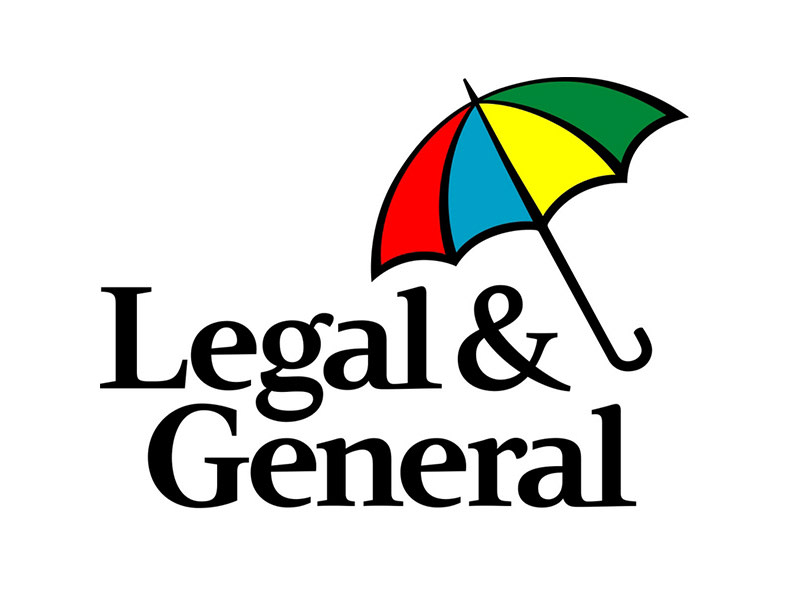Legal & General is one of the UK’s leading providers of responsible passive funds
We think this fund offers an attractive blend of responsible and passive investing across global markets
It could be a good addition to a broader responsible investment portfolio
This fund currently features on our Wealth Shortlist of funds chosen by our analysts for their long-term performance potential
How it fits in a portfolio
The Legal & General Future World ESG Tilted & Optimised Developed Index fund provides broad exposure to developed stock markets all over the world, while being mindful of environmental, social and governance (ESG) issues.
An index tracker fund is one of the simplest ways to invest, and we think this fund could be a great low-cost starting point for a portfolio aiming to deliver long-term growth in a responsible way. Given the fund’s bias towards the US, it could help diversify an investment portfolio that is focused on other regions, like Asia and Europe, and add a responsible tilt. It could also be a good addition to a portfolio of other tracker funds.
Manager
Legal & General is one of the largest providers of index tracker funds in the UK and has offered index funds to investors for over 30 years. That means it’s got the resources and expertise to track indices as closely as possible, and the scale to keep charges to a minimum.
Each equity index fund at Legal & General has a primary and secondary manager, although in practice it’s a team-based approach. The primary manager for this fund is Tom Hammond who joined Legal & General in 2000. Hammond has been on the index team for two decades and worked his way up to become a fund manager.
The secondary manager for this fund is Tasos Kontos. He manages a number of international equity index funds that focus on alternative methods of investing. Prior to joining Legal & General in 2010, Kontos spent more than five years as the Head of Index Design at the FTSE Group.
Process
This fund aims to track the performance of the Solactive L&G Enhanced ESG Developed Markets Index. The team would preferably invest in every company in the index and in the same proportion. However, this isn’t always possible because it's difficult to buy and sell the smallest companies quickly or at low cost, which could ultimately impact performance. This is known as partial replication and helps the fund closely match the performance of the index.
The fund is made up of over 1,300 companies with around 70% invested in the US and the rest in other developed markets such as Japan, the UK, Canada and Switzerland. While the fund is diversified across many sectors, roughly 40% is invested in communications and technology companies. It predominantly invests in larger companies but also invests in some smaller companies, in line with the benchmark. These can be subject to more extreme share price movements, which can increase risk.
The fund won't invest in direct violators of the UN Global Compact Principles (a UN pact on human rights, labour, the environment and anti-corruption) and companies that earn more than 10% of their revenue from tobacco. It excludes companies that are involved in controversial weapons and those that earn a certain amount of revenue from military and assault weapons. The fund's exclusions include companies that earn more than 20% of their revenue from the mining and power generation of thermal coal and those involved in its expansion. It also excludes companies that earn more than 5% of their revenue from the extraction of oil sands.
The index increases investments in companies that score well on a variety of ESG criteria – from the level of carbon emissions generated, to the number of women on the board and the quality of disclosure on executive pay. It also reduces exposure to companies that score poorly on these measures.
The advantage of reducing investments in poorly-scoring companies, rather than selling their shares completely, is that the Legal & General team can engage to help them improve. An increased investment in exchange for improvement on various factors is also a good incentive, so investors' money could make a positive difference.
The fund also adopts a decarbonisation pathway. This means it aims to reduce emissions by 50% compared to the non-ESG benchmark and then achieve at least a 7% reduction in carbon emissions per year until 2050. The goal is to align the fund with the Paris Agreement, which aims to limit the temperature rise caused by global emissions to 1.5°C above pre-industrial times. We think this is a positive step overall, but it increases the fund’s complexity.
Culture
Legal & General has developed its passive fund range over the last three decades. The company manages around £500bn in tracker funds, allowing it to offer a wide range of index-tracking options.
It’s built a team of experienced passive fund specialists and they’re innovative too. If an index doesn’t exist for a sector they’d like to track, they’ll often work with index providers, like Solactive, to create a suitable index for them to track.
The team managing this fund work closely with various risk departments across the business. We believe this provides support and adds challenge where appropriate.
Employees are also encouraged to participate in Legal & General’s share save scheme which should encourage them to be more engaged with the growth of the company. In addition, a portion of fund managers’ bonuses are invested into the funds they manage. By doing this, their interests are further aligned with the investors in the fund.
ESG Integration
Legal & General Investment Management (LGIM) is predominantly a passive investor, but we’re impressed with the extent to which they’ve woven Environmental, Social and Governance (ESG) matters into their culture. Being a mostly passive fund house hasn’t stopped them being innovative when it comes to ESG. In May 2019, the firm launched its ‘Future World’ range of funds, which this fund is part of.
The Future World range incorporates LGIM’s ‘Climate Impact Pledge’, which is their commitment to assess and engage with the world’s largest companies on how well they manage the implications of climate change. Engagement is carried out with reference to comprehensive ‘sector guides’, which outline best practice and LGIM’s expectations for companies in each key sector. Companies that consistently show a lack of awareness of climate change, and don’t respond positively to engagement, are sold from the Future World funds.
In 2019, LGIM established its Global Research and Engagement Platform, which brings together representatives from the investment and stewardship teams, in order to unify their engagement efforts. Engagement is conducted in line with the firm’s comprehensive engagement policy. A detailed description of the firm’s engagement and voting activity (including case studies) is available in its annual Active Ownership report. Quarterly Engagement reports are also available.
LGIM’s Stewardship team is responsible for exercising voting rights globally, both for LGIM’s active and index funds. Voting decisions are publicly available through a tool which allows a user to search for any company to find out how LGIM voted, and a detailed rationale is provided for votes against management and abstentions.
The FCA (Financial Conduct Authority) recently launched its Sustainability Disclosure Requirements (SDR), which include anti-greenwashing, naming and labelling rules. It includes four labels to help investors find funds that have a specific sustainability goal. This fund doesn’t have a sustainability investment label as it doesn’t have a specific sustainability objective. However, the fund and the index it tracks apply ESG criteria as described above. Therefore, it added ‘Tilted and Optimised’ to its name in December 2024 to reflect how it incorporates ESG into its process.
Cost
The fund has an ongoing annual charge of 0.20%, but we’ve secured a discount for HL clients of 0.05%. This means you will pay a net ongoing charge of 0.15%. This is more expensive than some other global market tracker funds, but we think it's a reasonable price to pay given the additional ESG analysis that takes place.
Our platform charge of up to 0.45% per year also applies, except in the HL Junior ISA, where no platform charge applies.
Performance
Since the fund launched in April 2019, it’s done a good job of tracking its benchmark, gaining 105.00%* over this time. Remember, past performance isn’t a guide to future returns.
Artificial Intelligence (AI) remained a key theme in 2024, and AI-related companies dominated stock markets. The US market performed particularly well due to strong earnings growth from companies involved in the development of AI. Nvidia, the world’s most valuable computer chipmaker, saw its shares, rise driven by huge demand for its products that power AI applications.
Growth companies, like those in the technology sector, tend to be sensitive to interest rate rises so falling inflation and interest rate cuts have helped these companies over the last year. The US Federal Reserve cut interest rates for the first time in four years in September and have continued to cut ever since, although it’s expected that the pace of rate cuts will slow down in 2025.
On the other hand, one of the weakest developed markets was France, which has struggled due to political uncertainty and concerns over its high debt levels.
Due to the exclusions and tilting mechanism, we expect the fund’s performance to differ slightly from non-ESG developed market index tracker funds. Over the past 12 months, the fund has risen 21.32% and slightly outperformed the broader developed market.
Despite global stock markets performing well, it’s been a volatile year with ongoing conflicts in Ukraine and the Middle East, and uncertainty around the US election amongst many other national elections.
Given Legal & General’s size, experience and expertise running index tracker funds, we expect the fund to continue to track the index closely in the future, though there are no guarantees.
Dec 19 – Dec 20 | Dec 20 – Dec 21 | Dec 21 – Dec 22 | Dec 22 – Dec 23 | Dec 23 – Dec 24 | |
|---|---|---|---|---|---|
Legal & General Future World ESG Tilted & Optimised Developed Index | 14.94% | 24.59% | -10.86% | 18.51% | 21.32% |
The period between 31 December 2019 and 31 December 2020 reflects the performance of the I Class version of the fund. Performance from 31 December 2020 onwards reflects the performance of the C class version of the fund. This is due to when each share class was launched.


